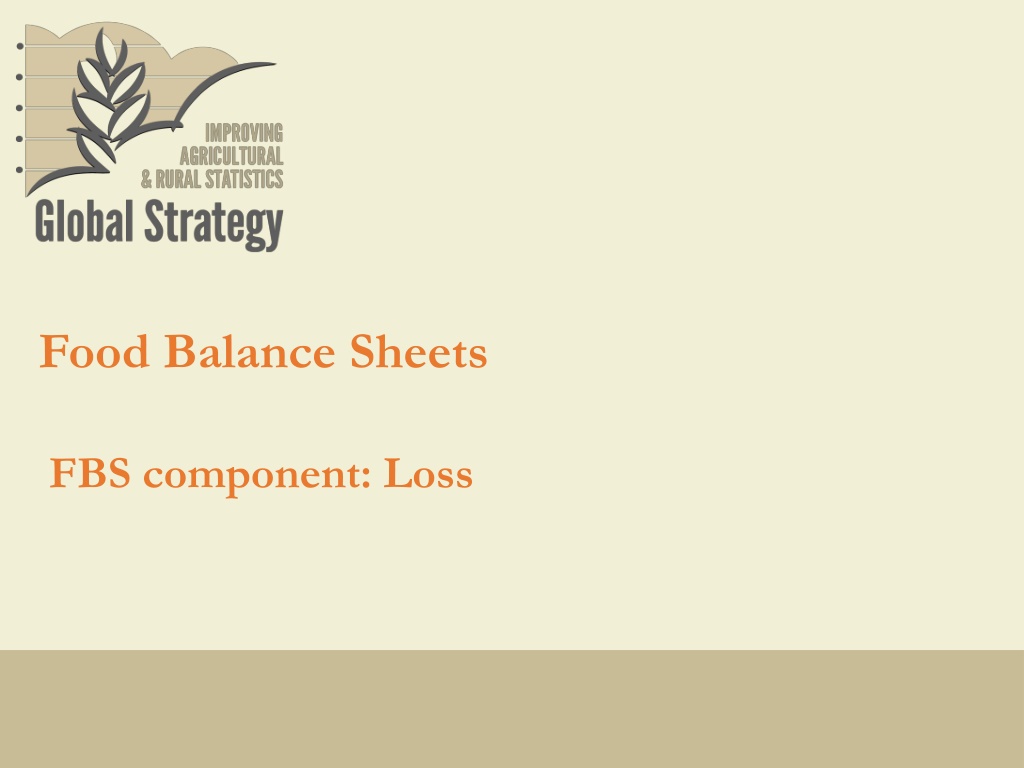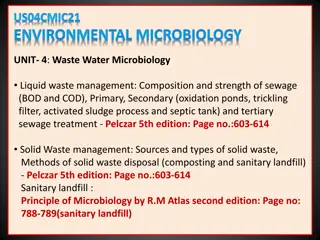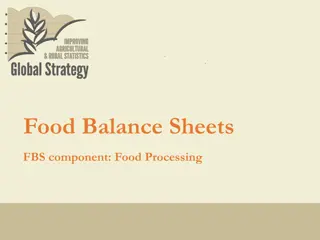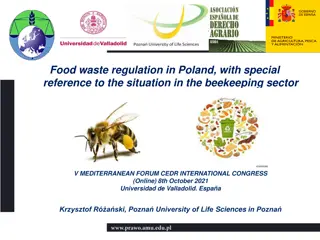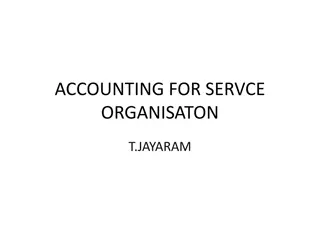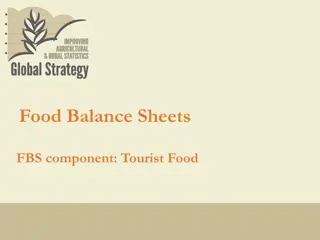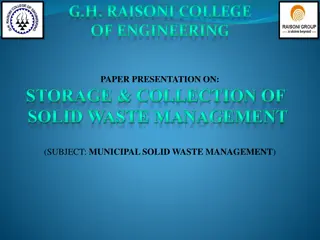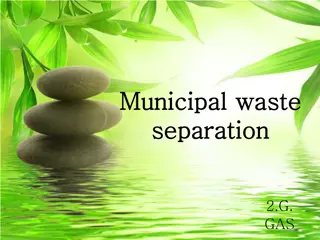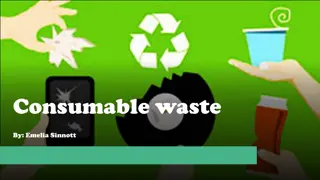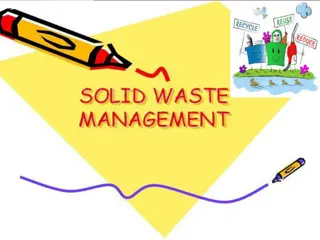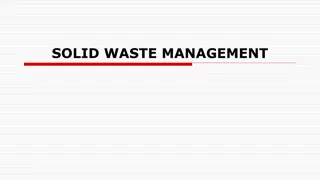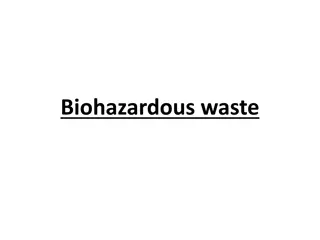Understanding Food Loss and Waste in Food Balance Sheets
Explore the concepts of food loss and waste in the context of Food Balance Sheets (FBS), including the differences between the two, their link to Sustainable Development Goals (SDGs), their role in FBS, and official versus alternative sources of information. Delve into the significance of accurately measuring food loss for effective resource management and policy-making to reduce waste and enhance food security.
Download Presentation

Please find below an Image/Link to download the presentation.
The content on the website is provided AS IS for your information and personal use only. It may not be sold, licensed, or shared on other websites without obtaining consent from the author. Download presentation by click this link. If you encounter any issues during the download, it is possible that the publisher has removed the file from their server.
E N D
Presentation Transcript
Food Balance Sheets FBS component: Loss
Training objectives a) Differences between food lost and waste b) How lost and waste are linked to SDGs c) What s their role in FBS d) Official and alternative source of information 2 2
Outline 1. Concept of Loss in the FBS setting 2. Data sources: I. Official data sources II. Alternative data sources 3. Imputation and Estimation I. Recommended Approach II. Alternative Approach 3
SDG 12 Target 3 By 2030, halve per capita global food waste at the retail and consumer levels and reduce food Loss along production and supply chains, including post-harvest Loss. 6
Concept of Loss in FBS Food* losses are all the crop and livestock human-edible commodity quantities that, directly or indirectly, completely exit the post-harvest/slaughter production/supply chain by being discarded, incinerated or otherwise, and do not re-enter in any other utilization (such as animal feed, industrial use, etc.), up to, and excluding, the retail level. Losses that occur during storage, transportation and processing, also of imported quantities, are therefore all included. In Out Commodity as whole with its non-edible parts Out-graded quantities that re-enter the supply chain Pre-harvest/Pre-slaughter and harvest/slaughter losses Waste/Loss that occurs at the retail and consumer levels *Food refers to any substance, whether raw, processed or semi-processed (including drinks), that can be consumed. 7
Concept of Loss in FBS The purposes of the food balance sheet, loss most closely aligns with post-harvest/post-slaughter loss representing quantities of food that leave the production/supply chain at any stage from post-harvest up to the retail level The accurate measurement or imputation of Loss is important effect on the balance of food available for consumption means to help countries identify problems in production/particular supply chains to underpin policy efforts seeking to maximize resource efficiency. 8
Concept of Loss in FBS Agriculture Production/Supply Chain Post-harvest/ Post-slaughter Handling and Storage Public and household consumption Pre-harvest/ Pre-slaughter Agriculture Production Distribution to retail Processing and Packing Retail Loss & Waste Waste & Loss Loss is the result of unintended actions, decisions or situations. Waste results from some elements of a discretionary process. 9
II.1. Official data sources Attempting to measure or estimate Loss as part of their overall agricultural statistical programs Recommended to use targeted surveys to measure Loss surveying Loss in on-farm operations and storage, Loss in warehouses or collection points, Loss in transportation, and Loss in public storage including a module on Loss in annual production surveys at the farm level (to reduce the cost) methodological Report on the measurement of post-harvest Loss of grains and is planning to publish Guidelines on this topic in 2017 (Global Strategy) Countries holding large public food stocks (particularly of cereals) access to data on the Loss from these storage facilities is essential to accurate estimation of overall Loss 11
II.2. Alternative data sources Some data on Loss in specific segments of the supply chain available outside of official sources encouraged to consult warehouse managers and transportation firms or associations seek out case study investigations that may contain loss estimates for particular sectors Consider the statistical validity of the data, particularly its representativeness of the target population 12
III.1. Imputation and estimation Recommended approach Regression approach in cases where some historic data is available Assess particular situation on Loss: identifying critical loss segments in each supply chain o determine whether or not their imputation would improve through the usage of such an approach. Scour any relevant available information that might inform an estimate of Loss if no historical data. ???????? ?? ???? = ???????? ?? ?????????? ????????? % ???? 14
III.2. Imputation and estimation Alternative approach Hierarchical linear model in the case where no local information is available Level 3: Worldwide Commodity Group Data If not, then: Level 2: Worldwide Commodity Data If not, then: Level 1: Country and Commodity Loss Data 15
References Global Strategy to improve agricultural and rural statistics., 2017. Hanbook of Food Balance Sheet., pp 91-993., Rome, Italy Tayyib S., Golini N., 2016. The FAO approach to food loss concepts and estimation in the context of SDG 12 Target 3., presentation prepared for ICAS VII., Rome, Italy 16
